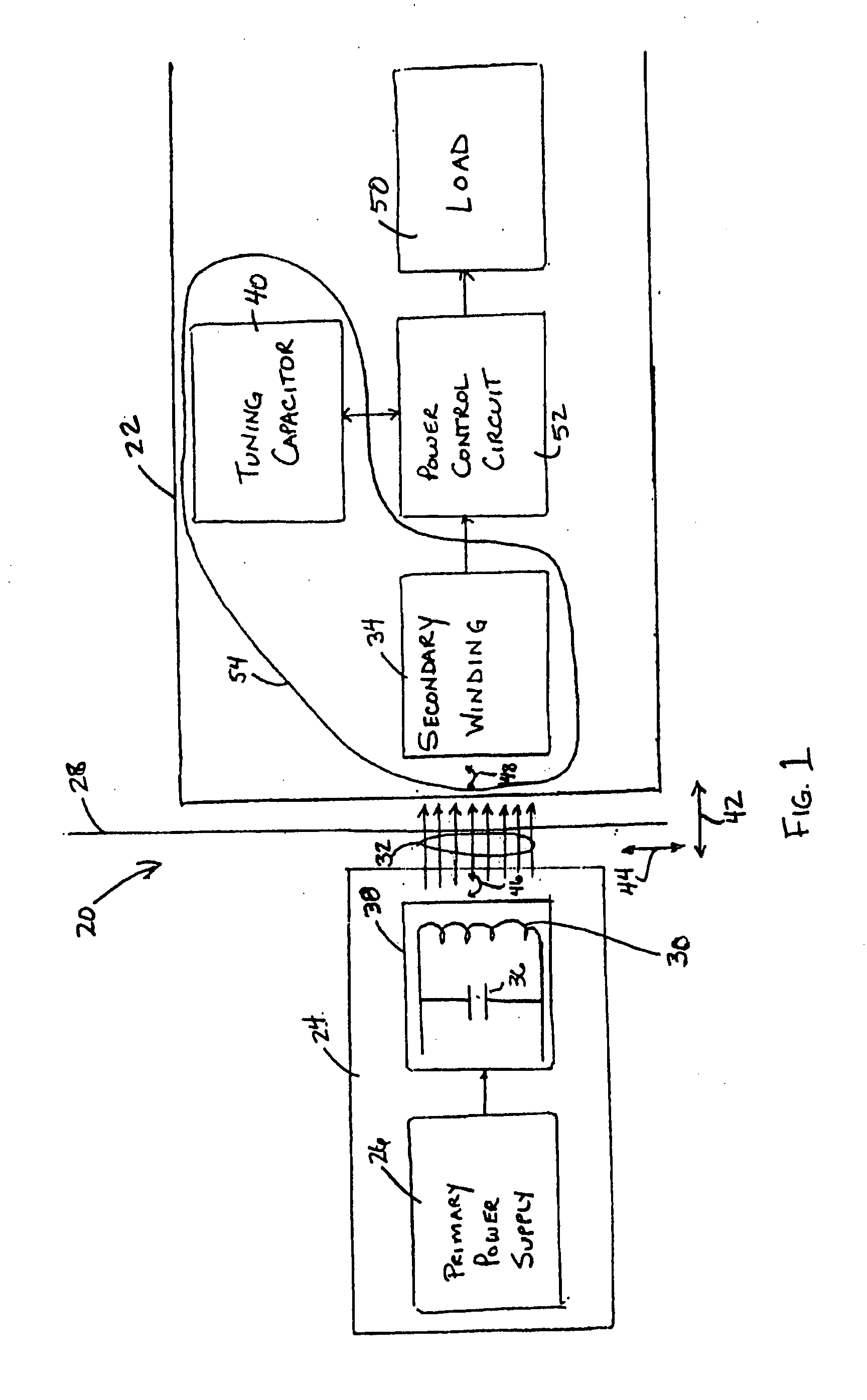Medical implant having closed loop transcutaneous energy transfer (TET) power transfer regulation circuitry
a technology of power transfer regulation circuit and implant device, which is applied in the field of medical implantable devices, can solve the problems of inability device performance erratically or fail to function at all, and inability to meet the needs of patients, etc., and achieve the effect of less susceptible to damage or inoperability
- Summary
- Abstract
- Description
- Claims
- Application Information
AI Technical Summary
Benefits of technology
Problems solved by technology
Method used
Image
Examples
first embodiment
[0040] In a first embodiment shown in FIG. 2, power control circuit 52 comprises a switch 56 that internally modulates the power signal induced in secondary coil 34 to control the power output to load 50. Switch 56 modulates the power signal by selectively detuning secondary resonant circuit 54 when the voltage output to load 50 exceeds a predetermined threshold level. A suitable switch 56 may include a solid state switch such as a triac or silicon controlled rectifier (SCR). The secondary resonant circuit 54 is detuned by placing switch 56 in the resonant circuit, and selectively closing the switch 56 to short-circuit either tuning capacitor 40 or secondary coil 34. Short-circuiting either capacitor 40 or coil 34 causes secondary resonant circuit 54 to lose resonance, thereby preventing energy transfer through coil 34 to load 50. When the load voltage drops below the voltage threshold, switch 56 is opened to again transfer power to load 50. By repeatedly detuning and then retuning ...
second embodiment
[0051]FIG. 7 provides a detailed schematic diagram illustrating the invention. The schematic in FIG. 7 is similar to the schematic in FIG. 4 except for the relocation of switch 56. As shown in FIG. 7, in this exemplary embodiment switch 56 comprises a solid-state relay between full-wave rectifier 62 and filter capacitors 64. An output signal from comparator 66 turns the relay on and off, based upon the output power to load 50. While switch 56 is depicted as a solid-state relay, numerous other types of switching devices could also be used to accomplish the present invention.
[0052]FIG. 8 illustrates an alternative embodiment for the power control circuit 52 of the present invention. In the alternative embodiment, comparator 66 in the closed loop power control system is replaced with a Proportional, Integral, Derivative (PID) controller 90. PID controller 90 activates switch 56 to pulse width modulate the power signal. PID controller 90 modulates the power signal by first calculating t...
PUM
 Login to View More
Login to View More Abstract
Description
Claims
Application Information
 Login to View More
Login to View More - R&D
- Intellectual Property
- Life Sciences
- Materials
- Tech Scout
- Unparalleled Data Quality
- Higher Quality Content
- 60% Fewer Hallucinations
Browse by: Latest US Patents, China's latest patents, Technical Efficacy Thesaurus, Application Domain, Technology Topic, Popular Technical Reports.
© 2025 PatSnap. All rights reserved.Legal|Privacy policy|Modern Slavery Act Transparency Statement|Sitemap|About US| Contact US: help@patsnap.com



